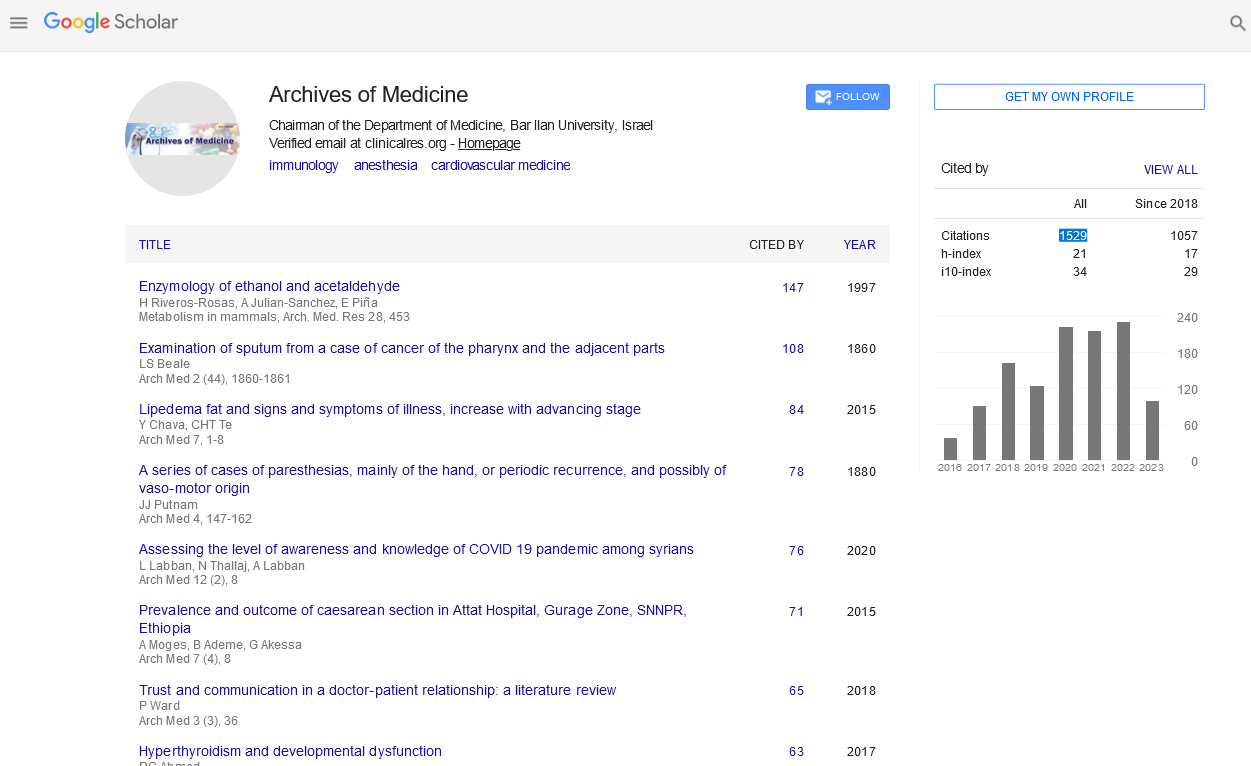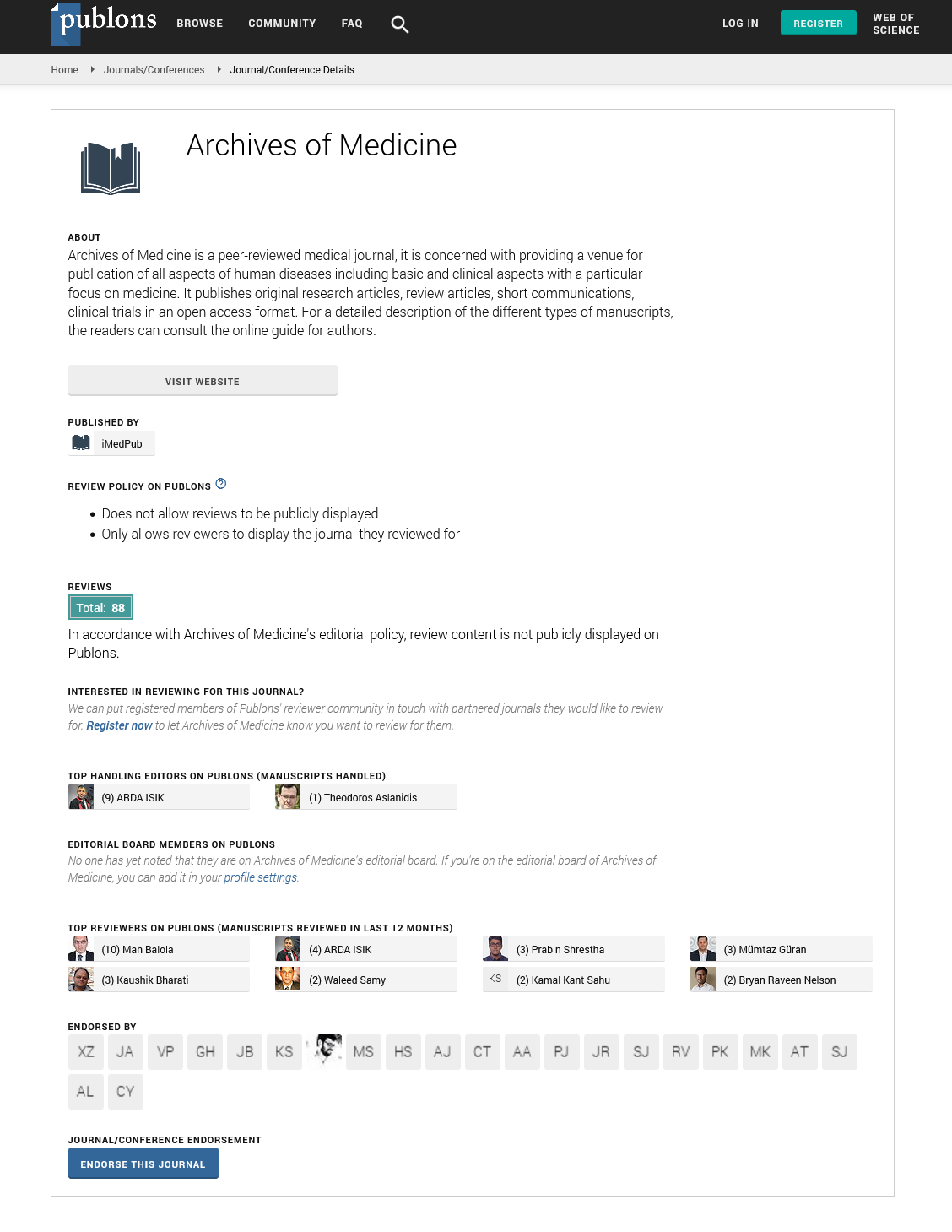Editorial - (2023) Volume 15, Issue 6
Retropharyngeal abscess in children
Taghreed Abdeen Mohammed*
Department of Pediatrics, Military Hospital, Khartoum, Sudan
*Correspondence:
Dr.
Taghreed Abdeen Mohammed, Department of Pediatrics, Military Hospital, Khartoum,
Sudan,
Email:
Received: 20-Nov-2023, Manuscript No. ipaom-23-14381;
Editor assigned: 21-Nov-2023, Pre QC No. P-14381;
Reviewed: 11-Dec-2023, QC No. Q-14381;
Revised: 15-Dec-2023, Manuscript No. R-14381;
Published:
22-Dec-2023
Editorial
Deep neck spaces are then classified into three groups
according to their relative position to the hyoid bone:
suprahyoid (peritonsillar, submandibular, parapharyngeal,
temporal, buccal and parotid spaces), with full-length
extension in the neck (retropharyngeal, prevertebral and
carotid spaces), anterior (or pretracheal) space, or infrahyoid
area (below the hyoid bone). The peritonsillar space is the
most frequently affected in children [1]. Other common
DNI localizations are para- and retropharyngeal loggias,
where suppurative processes may not find obstacles to their
extension, resulting in potentially fatal conditions such as
airway compression, jugular septic thrombosis (Lemierre’s
syndrome) and mediastinitis [2].
Retropharyngeal Abscess (RPA) is an uncommon
infection in the midline deep neck space, stretching from
the base of the skull to the posterior mediastinum. The
incidence of RPA has risen from 2.98 per 100,000 in
children under 20 years in 2003 to 4.10 per 100,000 in
2012, particularly affecting children aged 3 to 5 years, with
a 2:1 male predominance [1]. Literature on RPA is limited,
primarily sourced from case reports, with a notable scarcity
in the pediatric age group. The most substantial recent case
series, from 2004, studied 68 pediatric cases over a decade
[2]. Advances in imaging and widespread antibiotic use
have significantly mitigated the severity and complications
of RPA, turning a once life-threatening condition into a
more manageable one if identified early.
The diagnosis of RPA is frequently delayed due to
nonspecific signs and symptoms, including fever, neck
pain, odynophagia and drooling of saliva. Infants may
present with varied symptoms due to an underdeveloped
immune system. Clinical examination may reveal stridor,
asymmetry, neck mass, or torticollis. A high index of
suspicion and supportive imaging, such as CT scans, are
crucial for confirmation. Differential diagnoses, including
foreign body issues, epiglottitis and neoplastic disease, must
be ruled out. Delayed treatment may lead to complications
like airway compromise, mediastinitis, meningitis, vascular
issues, sepsis and respiratory distress syndrome.
A comprehensive treatment team involving an
otolaryngologist, anesthetist, critical care specialist and
radiologist is essential. Treatment involves immediate
surgical drainage, with or without tonsillectomy, though
conservative antibiotic management may be attempted
for noncomplicated abscesses. Practice variations in the
management of deep neck space infections were identified
in the 1990s and continue to exist [3]. Recent case
series and treatment algorithms supported greater use of intravenous antibiotics without drainage as an alternative
to routine initial surgical drainage [4], but in 1 recent US
series [5], 75% of patients with a deep neck space infection
underwent initial surgical drainage. National treatment
trends in the United States were examined only recently
[6]. Administering high doses of intravenous antibiotics
proves to be a successful resolution for deep space neck
abscesses, potentially eliminating the necessity for surgical
drainage, especially in cases of smaller abscesses. If children
do not exhibit prompt responsiveness to antibiotics,
surgical intervention is more likely needed for resolution.
Larger abscesses in children might show improvement with
antibiotic therapy alone but necessitate vigilant monitoring.
In stable children, particularly those with minor deep space
neck abscesses, a primary approach involving a trial of highdose
intravenous antibiotics alongside close observation is
recommended.
Acknowledgement
None.
Conflict of Interest
None.
References
- Caccamese Jr JF and Coletti DP. Deep neck infections: Clinical considerations in aggressive disease. Oral Maxillofac Surg Clin North Am. 2008;20(3):367-80.
Google Scholar, Crossref, Indexed at
- Woods CR, Cash ED, Smith AM, et al. Retropharyngeal and parapharyngeal abscesses among children and adolescents in the United States: Epidemiology and management trends, 2003–2012. J Pediatric Infect Dis Soc. 2016;5(3):259-68.
Google Scholar, Crossref, Indexed at
- Alawad AA and Khalifa AF. A rare cause of retropharyngeal abscess: Cervical Pott's disease. Am J Trop Med Hyg. 2015;92(5):884.
Google Scholar, Crossref, Indexed at
- Hoffmann C, Pierrot S, Contencin P, et al. Retropharyngeal infections in children. Treatment strategies and outcomes. Int J Pediatr Otorhinolaryngol. 2011;75(9):1099-103.
Google Scholar, Crossref, Indexed at
- Alawad AA and Khalifa AF. Cervical Pott's disease presenting as a retropharyngeal abscess: Controlled by Aspiration and Anti-tuberculous chemotherapy. Sudan Med J. 2013 Aug 1;49(2):97-100.
Google Scholar, Indexed at
- Page NC, Bauer EM, Lieu JE, et al. Clinical features and treatment of retropharyngeal abscess in children. Otolaryngol Head Neck Surg. 2008;138(3):300-6.
Google Scholar, Crossref, Indexed at






